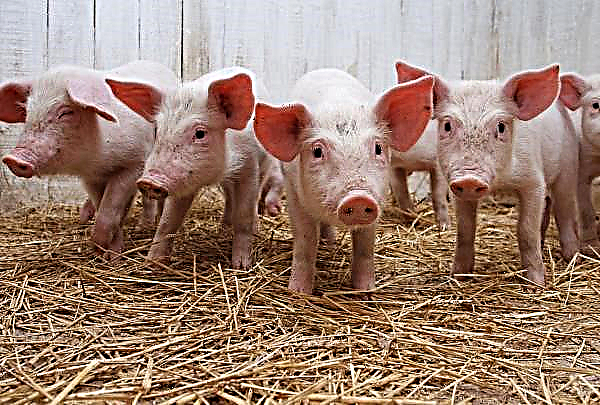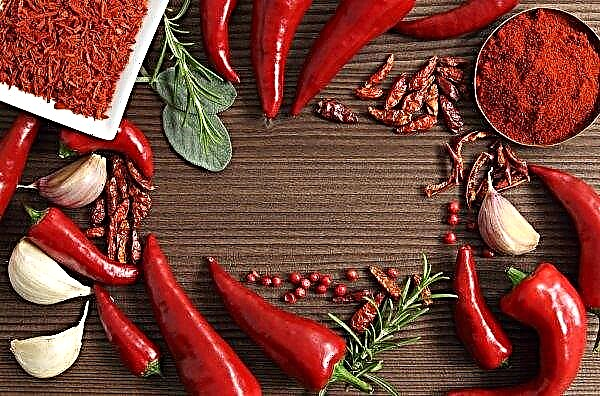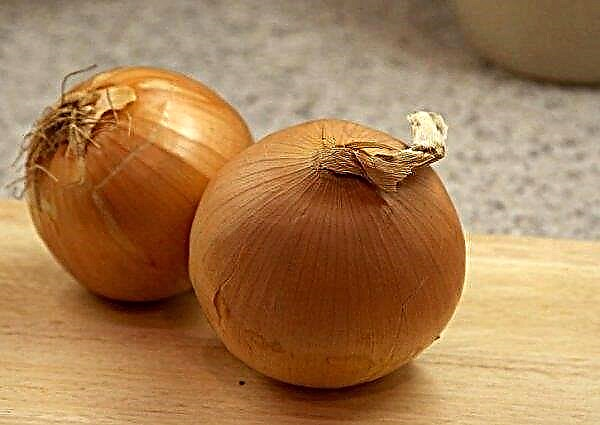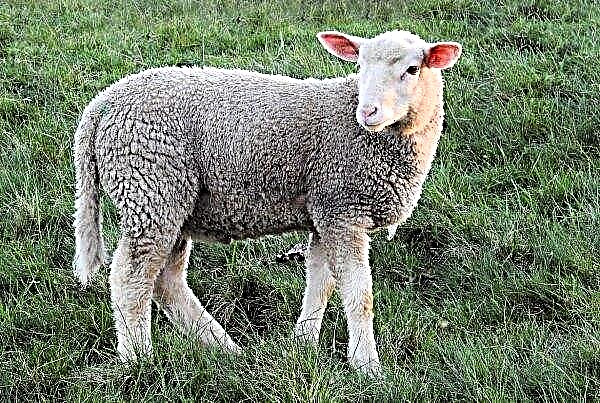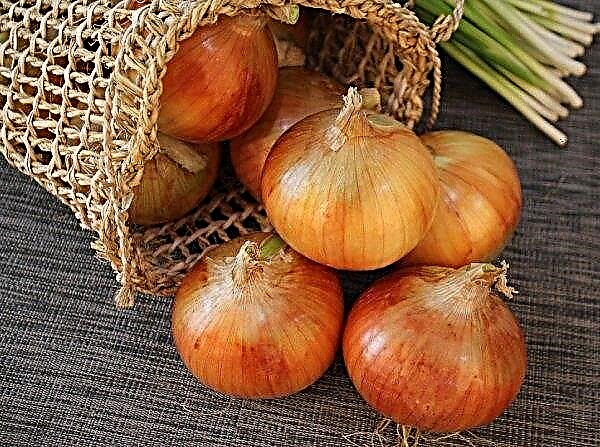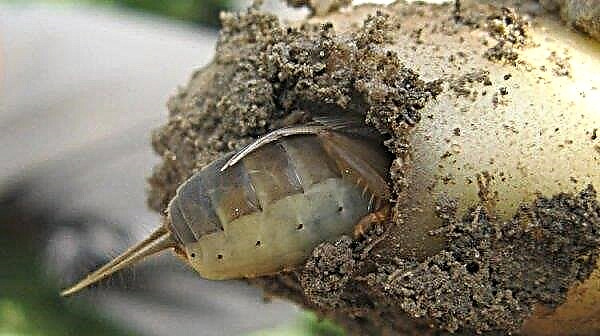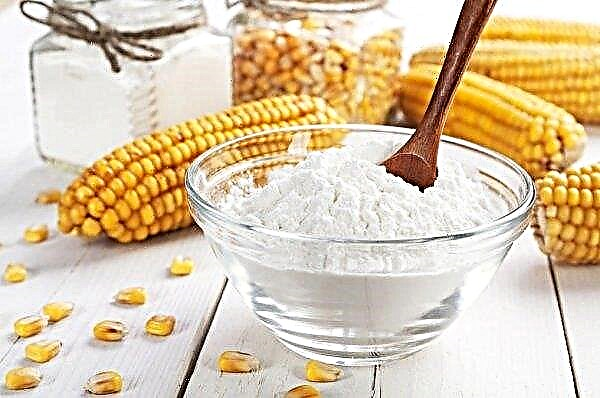Growing broiler chickens is becoming an increasingly popular activity every year. If you achieve high productivity indicators, this business can be very profitable or serve as a good additional income to the main job. In order to run a trouble-free production, it is necessary to take care of broilers from an early age, when they are particularly susceptible to disease, and take urgent measures at the first symptoms.
Adult Broiler Disease
Chickens of broilers are bred to get eggs and meat. The popularity of their breeding is due to high growth rates and high productivity. Already at the age of one and a half months, the chicken reaches a weight of up to 2 kg, and in the fourth month the birds are slaughtered. Like any living organism, broilers are susceptible to disease.
Their main reasons are:
- malnutrition;
- hereditary diseases;
- violations in the conditions of detention.
In order to recognize and diagnose ailments in time, it is necessary to know each of them “in person”, because the cases are different and require an individual approach to treatment. Let us consider in detail each type of possible disease.
Coccidiosis
This infectious disease is caused by the spread of coccidia class infections. In chickens, coccidiosis occurs when one of the 11 protozoan species is affected - eimeria tenella. Particularly active bacilli develop in humid and warm weather. Coccidia enters the body of birds through water, moist litter, food and quickly spreads among the livestock. By hitting the chicken body, coccidia affects the nervous system, digestive organs and intestines. In the first days, the disease does not have pronounced symptoms, but 1-2 days after the disease, the appetite disappears in the bird, diarrhea occurs, and it becomes lethargic and lethargic. Feathers are tousled and skin is pale or bluish. The sick bird is inactive, does not contact with other individuals, sits with its wings down. The bird dies after 4 days, and eimeria remains in the water, feed, in the house for a month, on pastures - up to a year.
In the first days, the disease does not have pronounced symptoms, but 1-2 days after the disease, the appetite disappears in the bird, diarrhea occurs, and it becomes lethargic and lethargic. Feathers are tousled and skin is pale or bluish. The sick bird is inactive, does not contact with other individuals, sits with its wings down. The bird dies after 4 days, and eimeria remains in the water, feed, in the house for a month, on pastures - up to a year.
Important! Necessary make periodic rounds of chickens in order to notice the signs of the disease in time, since coccidiosis has the character of a pestilence: in adults, 100% mortality of the entire population occurs, and the disease is very quickly transmitted.
They treat the disease with the help of chemicals ("Koktsiprodin", "Baykoks", "Madikoks", "Koktsisan", "Koktsidin" and others). The bird is isolated and for 4 days they add medicine to the water and feed in the proportions strictly stated in the instructions. The room is disinfected, ventilated, drinking bowls, feeders and bedding are changed.
Colibacillosis
The causative agent of colibacteriosis is E. coli, which is found in chicken feces. Infected feces can get into food or water and transmit the disease to the entire livestock (mortality rates for mass infection - 30%). Feces with infections fall on the eggshell, from where they penetrate the embryo, which is also born diseased.
The first signs are:
- liquid feces;
- oppressed and depressed bird behavior;
- rapid diarrhea;
- blue beak.
The disease most often affects young growth. Diagnosis is based on clinical manifestations and pathological studies. The cause of the disease are violations of veterinary and zootechnical standards, sanitary conditions. Treatment is carried out only at an early stage with antibiotics based on the latest discoveries in the branch of the disease: Lexoflon, Enronit, Synthomycin, Furazolidone and others.
When infected, herds carry out the slaughter of birds and the disposal of bodies. In young animals who manage to overcome the disease, there is a slowdown in growth and convulsions. The meat of infected birds is not eaten.
Marek's disease
This ailment is also called neuro-lymphomatosis. It is caused by a virus that is contained in DNA and leads to goiter paralysis and damage to the nervous system. In birds, there is a change in the color of the iris of the eye, lack of appetite due to damage to the digestive organs, weakness, pain in the legs and joints (which leads to a change in gait and limp), curvature of the neck, wings and limbs, pallor of the mucous membranes. The incubation period lasts slowly, the first symptoms can appear from 3 weeks to several months after the defeat of the virus. The acute form of the disease leads to stopping the functioning of the limbs and blindness. Complete infection of the flock begins after 2 weeks of illness of the first bird. Modern science does not know how to treat Marek’s disease, and does not have drugs that stop the development of the disease. Since the virus is stored in the feathers and down of the bird for a long time, if the first symptoms are recognized, the infected chicken is killed.
The acute form of the disease leads to stopping the functioning of the limbs and blindness. Complete infection of the flock begins after 2 weeks of illness of the first bird. Modern science does not know how to treat Marek’s disease, and does not have drugs that stop the development of the disease. Since the virus is stored in the feathers and down of the bird for a long time, if the first symptoms are recognized, the infected chicken is killed.
Bird flu
Avian influenza is an infectious disease, the carrier of which are considered 15 types of strains of viruses, the most common of which is H5N1. Viruses are carried by wild birds (most often ducks), which are immune to the disease. This disease can take the form of a pandemic, thus spreading across one state and to neighboring territories. Bird flu pandemics occur 2-3 times per 100 years.
Symptoms of the disease are as follows:
- bowed head of a bird and closed eyes;
- stiffness and lethargy of chickens;
- loss of appetite and thirst;
- increased body temperature up to 43–44 ° С;
- ruffled feathers;
- diarrhea;
- hyperemic mucous membranes of the eyes;
- bonding of nasal openings.
The disease is characterized by damage to the respiratory tract and gastrointestinal tract. The incubation period lasts from 20 hours to 2 days. The speed of distribution within the stock is fast. A fatal outcome occurs in 10–100% of cases of infection, depending on the form. For a mild form, general malaise, loss of appetite, and deterioration of the feather cover are characteristic. This is one of the few zooanthroponic diseases (can be transmitted from animal to human). 62% of human cases of avian influenza have become fatal. When identifying the symptoms of the disease, you should definitely inform your local veterinarian, if after contact with the bird you feel a fever, you should immediately consult a doctor. There are no effective cures for bird flu in the world of medicine, so it cannot be treated. The meat of a diseased bird is unsuitable for consumption, so such chickens are slaughtered, and carcasses are burned.
When identifying the symptoms of the disease, you should definitely inform your local veterinarian, if after contact with the bird you feel a fever, you should immediately consult a doctor. There are no effective cures for bird flu in the world of medicine, so it cannot be treated. The meat of a diseased bird is unsuitable for consumption, so such chickens are slaughtered, and carcasses are burned.
Did you know? Only in 2018, the Institute of Experimental Medicine invented a vaccine against the H7N9 influenza virus. Studies on the effect of the antidote are still ongoing. Parallel experiments continue in the USA, China and Russia. Scientists suggest that the next outbreak of bird flu will be enough for two months to spread throughout the world, and the counteraction of the new disease to modern medicine is still unknown.
Chicken pox
Chicken pox is caused by a virus that a healthy chicken can get through contact with already sick birds (including wild ones), from rodents, insects (ticks), and feces from infected birds (which could get into water, feathers, or feed). The virus enters the chicken body through open wounds and the mucous system, affecting the skin and respiratory tract.
The disease occurs in three forms:
- Skin. This is the easiest form. It is characterized by the appearance of smallpox in open skin from feathers. Small pins look like large red warts, which coarsen over time. The mortality of the flock when infected with smallpox of this form is small.
- Diphtheria - the most acute form. With it, the respiratory tract, larynx, esophagus and mucous membranes are affected. The lining of the eye is watery or festering, photophobia sets in, ulcers form on the mucous membranes (in the oral cavity, on the larynx and trachea). Eating food becomes painful for the chicken, which is why it does not eat food and quickly weakens. Mortality occurs in half of the infected livestock.
- Mixed. This is the simultaneous penetration of the virus into the skin and mucous membranes.
 Only a mild form of chicken pox is subject to treatment. The sick individual is isolated, soldered with Anfluron solution, boric acid or Furacilin, and the house is treated with formaldehyde and disinfected. Healthy individuals are subject to mandatory vaccination.
Only a mild form of chicken pox is subject to treatment. The sick individual is isolated, soldered with Anfluron solution, boric acid or Furacilin, and the house is treated with formaldehyde and disinfected. Healthy individuals are subject to mandatory vaccination.Constipation
With constipation, clogging of the intestinal tract of the bird, through which the cork cannot pass, is characteristic. The appearance of constipation is the first signal of an improper diet of chicken and dubious quality of food. Also, the most common causes are hypothermia or overheating of young chickens, vitamin deficiency, injuries, drinking cold water, excess weight, and gastric atrophy. You can be convinced of the presence of constipation in the bird, if it has ceased to defecate or defecate with a hard chair, often crouches and flaps its wings, cackles with uncharacteristic sounds, and is very tense.
Such a bird needs to be set aside from the rest and transferred to an individual diet. To improve the passage of the cork, sick individuals are introduced into the diet porridge mixed with castor or petroleum jelly oil, the content of chopped greens, vegetables and fruits in the liquid mashrooms is increased. Pectin and vitamin supplements are introduced along with the food, the drinkers are filled with slightly warm water. If the diet did not manage to normalize stool, this indicates possible parasitic causes of constipation. In this case, turn to the veterinarian who prescribes the drug solutions (Metronidazole, Vermox).
Chick disease
Many diseases are more often manifested in young animals, because at the stage of formation and growth, the body is most sensitive to external factors. Chickens have not yet developed immunity, and an unprotected environment can become a victim of viruses and bacteria. In order to avoid the spread of diseases, chickens care is constantly monitored and individually inspected by each individual.
Dyspepsia
Dyspepsia is a disease caused by a malfunction of the digestive tract. May occur in day-old chicks as a result of a disturbance in their diet. The body of young chicks is hypersensitive and requires careful care about the quality of the feed. During this period, it is especially important to ensure the chicks normal digestion and assimilation of food.
The causes of dyspepsia are:
- violation of the temperature regime in the house (tummies of chickens should be on a warm, dry litter);
- improper diet with the introduction of hard feed (barley, rye);
- feeding with coarse foods (shellfish, chalk);
- insufficient chopping of food;
- poor quality of food or its deterioration (moldy, sour, rotten food);
- a sharp change in feed.
 The main symptom of the disease is diarrhea (light yellow, light green in color with an admixture of foam or mucus), a constant contamination of the anus with feces. Chickens stretch their neck, move languidly with their head bowed and their eyes closed, not showing appetite. The body of chickens is able to overcome the disease with consistent treatment. For this, sick chickens are separated from the general flock and transferred to a diet. Instead of water, they give a 0.03% soda solution, and acidobulonic cultures are introduced into the diet.
The main symptom of the disease is diarrhea (light yellow, light green in color with an admixture of foam or mucus), a constant contamination of the anus with feces. Chickens stretch their neck, move languidly with their head bowed and their eyes closed, not showing appetite. The body of chickens is able to overcome the disease with consistent treatment. For this, sick chickens are separated from the general flock and transferred to a diet. Instead of water, they give a 0.03% soda solution, and acidobulonic cultures are introduced into the diet.The main menu includes lactic acid products, solutions containing beneficial lactic acid bacteria, infusions of chamomile or strong tea, easily digestible feeds, meat and bone and fish meal, yeast whey, finely grated greens, garlic, onions and vitamin and mineral supplements. In the presence of a mild form of dyspepsia, the youngsters recover within 2-3 days. In the future, to avoid the disease when introducing new feed, they are tested on a small group of chickens.
Aspergillosis
Aspergillosis is caused by pathogenic fungi of the genus Aspergillus, which enter the body through the respiratory tract. Fungi are contained in air, soil, can appear in damp rooms, moist litter. The disease affects mainly young animals, as their airways are susceptible to pathogenic actions. Constantly inhaling the fungus, the ailment acquires an acute form, which is characterized by:
Constantly inhaling the fungus, the ailment acquires an acute form, which is characterized by:
- shortness of breath (a chicken extends its neck when inhaling and as if it cannot "breathe");
- hoarseness and perspiration when inhaling;
- cough;
- blue crest;
- pallor of feathers;
- drooping wings;
- lethargy.
Aspergillosis should be treated only in the early stages. In this case, antibiotics are prescribed by veterinarians, as the disease spreads rapidly among the livestock. In the event of a recovery in the future, the houses are regularly aired (without drafts) and kept dry.
Salmonellosis
Salmonellosis is a viral disease caused by Salmonella coli. The chick can get the pathogen through food or water, as well as by airborne droplets from infected individuals. Because salmonella enters the eggshell and can infect an egg, a chicken may already be born with the virus. Of the more than two thousand strains of salmonella, chickens become infected about 230 of them. The virus acts cunningly and may not manifest itself for a long time. The disease can either take an over-acute form, and does not manifest itself at all with strong bird immunity. The incubation period lasts from 6 hours to 3 days. The number of deaths can reach 80%. Salmonella affects the gastrointestinal tract, muscles and oviduct. Then the virus secretes toxins and spreads throughout the body, affecting all organs. Most often, chickens aged 1-2 weeks are infected.
The disease can either take an over-acute form, and does not manifest itself at all with strong bird immunity. The incubation period lasts from 6 hours to 3 days. The number of deaths can reach 80%. Salmonella affects the gastrointestinal tract, muscles and oviduct. Then the virus secretes toxins and spreads throughout the body, affecting all organs. Most often, chickens aged 1-2 weeks are infected.
Among the signs of the spread of salmonella in chickens, there are:
- diarrhea with blood;
- swelling of the legs and eyes;
- weakness and apathy;
- labored breathing;
- lack of appetite;
- growth lag.
The disease can be transmitted to any kind of animals and humans. Treatment of chicks is carried out with the introduction of a course of antibiotics ("Levomycetin", "Gentamicin", "Furazolidone"). In parallel, probiotics and vitamins are introduced into the diet. The course of treatment lasts from 6 to 9 days. The meat of a chicken who has been ill with an acute form for a long time contains the causative agents of the disease, so it is not suitable for consumption.
Did you know? In addition to chicken diseases, one can encounter such an interesting phenomenon as the phenomenon of eggs, in which they undergo various modifications. One of these phenomena is the egg in the egg, when the fetus with the formed shell returns back up the oviduct of the chicken, where a new one has already begun to develop. Thus, both finished eggs are once again covered with shells.
Pullorosis
Pullorosis is one of the forms of salmonellosis, the causative agent of which is Salmonella pullorum-gallinarum. Unsanitary conditions and dampness in the house become the main source of infection. The main symptom of the disease, by which it is possible to unequivocally determine pullorosis, is diarrhea with a white coating. In addition, the depressed state of the bird, lack of appetite, severe thirst, shortness of breath, exhaustion and weakness, fever up to 43–44 ° С, as in bird flu, are observed. The incubation period lasts 1-6 days. Sometimes a bacillus enters an egg from an adult chicken, and the chicks are born already sick. In this case, death occurs in the first days after birth. Most often, chickens under the age of 1 month are infected. The virus spreads rapidly through food and water. Antibiotics are used for treatment.
The incubation period lasts 1-6 days. Sometimes a bacillus enters an egg from an adult chicken, and the chicks are born already sick. In this case, death occurs in the first days after birth. Most often, chickens under the age of 1 month are infected. The virus spreads rapidly through food and water. Antibiotics are used for treatment.
Infected chicks are planted and fed a course of Sulfadimezin or Biomycin. The remaining individuals of the flock are also fed with antibacterial and antiviral drugs: Furazolidone, Tetracycline, and others. Chickens that are not being treated are destroyed.
Rickets
Such an insidious ailment, like rickets, occurs due to a lack of calcium, phosphorus and vitamin D in the body of chickens. This happens due to an improper diet, too tight content and a rare walking range. This disease is not transmitted from one chick to another, however, since the conditions of detention are the same for the whole herd, as a result of errors in nutrition and violation of growing standards, signs of rickets appear in the entire livestock.
The main symptoms are:
- soft beak and crest;
- a distorted gait, bouncing when walking, and then completely inability to get on your feet;
- growth and development retardation;
- ruffled feathers;
- impaired coordination of movements;
- sharp weight loss
- lack of strength.
In broiler chickens, the disease develops on the 8–10th day of life. In the acute form, bone deformation occurs, walking on the hock joints, the body is distorted, the head becomes large, and the body is small, because it stops growing. The disease is cunning in that its obvious signs are manifested in the later stages, initially the lack of calcium is not visible visually. Rickets is a treatable disease.
To do this, review the diet of birds, increase the dose of grain and green fodder, introduce finely ground shell rock, chalk, limestone, meat and bone and fish meal. As medications, fish oil, vitamins and trace elements (containing calcium and phosphorus), tricalcium phosphate are added. Chicks are subject to regular walking in the sun and keeping in a spacious room.
Hypovitaminosis A
This disease occurs due to a lack of vitamin A and retinol in the body of birds.
Young animals can get sick for two reasons:
- with the wrong diet;
- from the mother bird.
Adult chicken with insufficient retinol and carotenoids in the feed does not receive vitamin A, which accumulates in the liver and egg yolks. Because of this, chicks are born weak with obvious signs of defects. The form of hypovitaminosis depends on the amount of vitamin deficiency contained in the yolk. As a rule, the disease manifests itself on the 7-10th day of the life of chickens.
Important! Hypovitaminosis is subject to treatment; for this, the diet is maximally filled with carotene-containing products and mineral supplements. The daily dose of retinol in the treatment of the disease exceeds the usual norm by 3-5 times.
The most common symptoms are lack of appetite, loss of coordination, stunted growth, weight loss, chickens do not stand on their feet and fall on their backs. Swelling of the eyelids, the formation of crusts around the eyes and cheesy clusters are observed, “night blindness” occurs, shortness of breath with wheezing and whistling. The epithelium is covered with a crust, keratinization of the mucous membranes occurs. In parallel, nervous phenomena are manifested: bouncing during a walk, circular movements. It is mandatory that crushed carrots, grated greens, fish oil, herbal flour, B vitamins, tocopherol, vitamin A oil concentrate are introduced into the diet. Treatment lasts for three weeks. If after these measures the symptoms of hypovitaminosis remain, the drugs are administered intramuscularly to the birds.
In parallel, nervous phenomena are manifested: bouncing during a walk, circular movements. It is mandatory that crushed carrots, grated greens, fish oil, herbal flour, B vitamins, tocopherol, vitamin A oil concentrate are introduced into the diet. Treatment lasts for three weeks. If after these measures the symptoms of hypovitaminosis remain, the drugs are administered intramuscularly to the birds.
Broiler chicks wheezing
Wheezing, coughing and sneezing are not signs of a healthy chicken. These manifestations should alert the owner or employee of the poultry farm. In the best case, wheezing occurs due to the common cold. At the same time, the body temperature rises at the chick, mucus from the beak constantly flows, the respiratory openings become clogged, difficulty breathing with hoarseness is traced.
Most often, a cold is manifested in the cold season, so during this period you need to especially warm the premises for the birds. Distribute the lamps evenly at the farm level, use shelf heating, close all possible holes at the household level, prevent drafts, and install heating devices. With a cold, the disease can be transmitted from one chicken to another, so you should not start with treatment.
For this, the livestock is drunk with a course of antibacterial drugs (for example, Enroxil), to increase immunity they give Nutril Se and vitamin concentrates. In the worst case, wheezing is the result of serious illnesses, such as colibacteriosis, bronchopneumonia, bronchitis (which is especially dangerous in the acute form of development), aspergillosis, mycoplasmosis, pullorosis. For treatment, they must go to the veterinarian to determine the exact ailment and prescribe a course of drugs.
Disease Prevention
In order for a farm or production not to be exposed to pestilence due to illnesses, it is necessary to foresee measures to avoid illnesses.
All preventive measures are divided into three main groups:
- improvement of conditions of detention;
- revision of nutrition;
- auxiliary medicines and vaccination.
The main requirement for bird care is to ensure optimal temperature, humidity and light. The air temperature in the house should not exceed +24 ... + 26 ° С in the first days of life, from the 6th day the indicator drops to +22 ... + 23 ° С. At the age of 13 days, the temperature can be lowered to + 21 ° C, monthly chickens feel good at + 19 ° C, and then broiler chickens become less demanding on heat with age. In the first days of life, chickens must be laid on a heated litter, which in factory conditions should be warmed up to +33 ... + 34 ° С.
Otherwise, the tummies of the chicks freeze, and this leads to malfunction of the internal organs and diseases. The premises for keeping birds should always be kept dry (since fungi are the causative agents of many viral diseases), regularly ventilated. Devices, drinking bowls and feeders are washed and disinfected (the younger the livestock, the more often), the litter is changed (the frequency depends on its material). Processing tools, perches, shelves can be carried out using lime or disinfecting solutions. The room should not have drafts and dampness, as they are the root cause of the development of viruses. Before feeding, the brood feed is tested on several birds. In the absence of negative reactions, it is given to the rest of the livestock. Food should be varied and appropriate for the age of the birds. Additionally, vitamin supplements and minerals are necessarily included in the diet.
Processing tools, perches, shelves can be carried out using lime or disinfecting solutions. The room should not have drafts and dampness, as they are the root cause of the development of viruses. Before feeding, the brood feed is tested on several birds. In the absence of negative reactions, it is given to the rest of the livestock. Food should be varied and appropriate for the age of the birds. Additionally, vitamin supplements and minerals are necessarily included in the diet.
For preventive measures from the first days of life, broilers are fed a course of drugs:
- "Avesstim" (to strengthen immunity);
- Amoclanide (for better digestive tract function);
- “Cedavit” (a complex of vitamins);
- Chiktonik (enrichment of the diet with minerals and trace elements);
- "Brovitakoktsid" (for the prevention of coccidosis);
- "Fos-Bevit" (vaccine with a concentrate of vitamins of group B);
- "Vectormoon" (a vaccine for the prevention of infectious diseases).
Doses and frequency of each preparation depend on the age of the bird and are prescribed by the veterinarian. In order not to waste time, effort and money on long-term treatment, it is necessary to provide the most comfortable conditions immediately and maintain the diversity of the diet of chickens. By spending time carefully monitoring bird development, you will reward yourself with high livestock productivity in the future.

